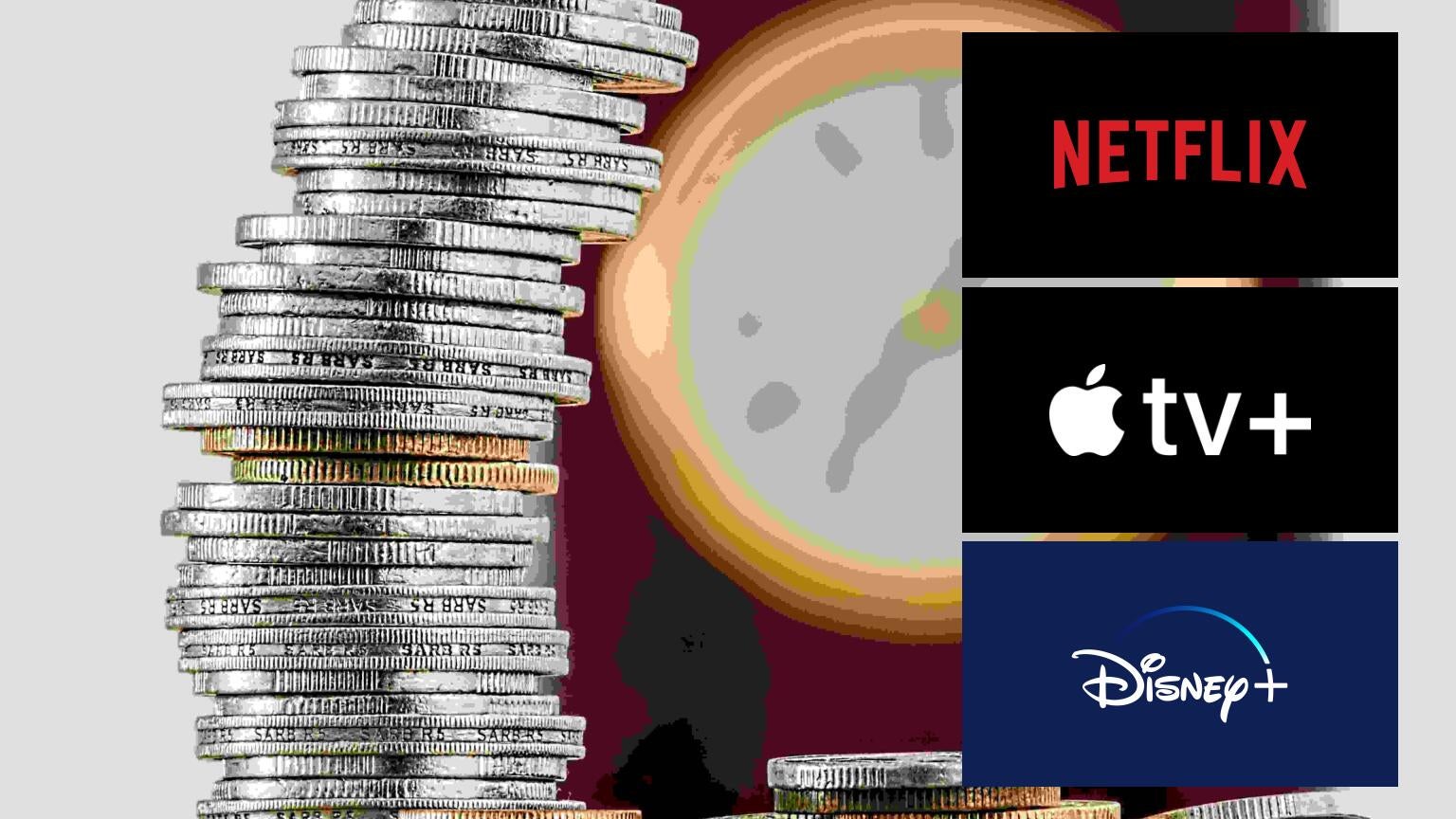Examining the History of Streaming Price Increases; Which Service Has Raised Rates the Most?
Examining the History of Streaming Price Increases; Which Service Has Raised Rates the Most?
There was quite a bit of news about streaming services raising prices in 2023, but how much have they risen in cost since they were first launched?

Since the advent of the streaming era, prices have gone up. Either because of natural inflation, additions to libraries, mergers and acquisitions, or any other market influences, subscription rates have never remained steady for long. The sheer number of streaming services that decided to raise their subscription rates in 2023 drew a good deal of attention to the practice, especially as many of those services paired price increases with content cuts that made audiences wonder if they were to be stuck in a downward spiral of paying more money for less content.
- All top subscription on-demand services have increased prices by at least 20% since they first launched.
- Netflix is the worst offender, with a 188% increase in the price of its most expensive plan since it first hit the market.
- Streaming services are all chasing higher profits, which means that the trend of frequent price increases is likely going to get worse.
How Much Have Top Streamers Increased in Price Over the Years?

The Streamable has been covering the Streaming Wars since 2017. In that time, we’ve seen plenty of streamers come and go, but one tell-tale trait of the services that have managed to survive has been ever-increasing prices. To some extent, this is necessary, as inflationary forces affect big media companies just as much as they do everyone else, and subscription rates have to keep up with the costs of creating content.
Still, price increases force customers to pick and choose which streaming services get their money every month, and has led to the behavior of cycling, which is the practice of viewers signing up for a streamer to watch one specific title, then canceling before a new billing cycle hits.
In terms of overall percentage increase, Netflix has been the worst offender when it comes to streaming price increases, but it is also the most tenured streamer, so it has had longer to build up a history of increasing its prices. Netflix debuted its streaming platform in 2007, at the time its most expensive plan was $7.99. This, of course, joined its DVD rent-by-mail service, which had launched a decade before. Customers who want to get all of Netflix’s best features on its top plan currently have to pay $22.99 per month to do so, an increase of $15 per month (188%) in nearly 17 years.
| Streamer | Year Introduced | Most Expensive Plan at Launch per Month | Most Expensive Plan in 2024 per Month | % Increase | $ Increase |
|---|---|---|---|---|---|
| Netflix | 2007 (streaming) | $7.99 | $22.99 | 188% | $15 |
| Apple TV+ | 2019 | $4.99 | $9.99 | 100% | $5 |
| Disney+ | 2019 | $7.99 | $13.99 | 75% | $6 |
| Hulu | 2007 | $10 | $17.99 | 80% | $7 |
| Max (then HBO Now) | 2015 | $14.99 | $19.99 | 33% | $5 |
| Paramount+ (then CBS All Access) | 2014 | $9.99 | $11.99 | 20% | $2 |
| Peacock | 2020 | $9.99 | $11.99 | 20% | $2 |
| Prime Video (then Amazon Unbox) | 2006 | $8.99 | $11.99 (as of Jan. 29, 2024) | 33% | $3 |
No streaming service has kept prices where they started, and each of them has grown their library considerably from its size at that service’s launch, so they are increasing their value in addition to their rates. This is true even of services that launched relatively recently like Apple TV+ and Peacock, and nearly all platforms have also added enhanced user-experience features — like the ability to stream some titles in 4K — since they were first rolled out.
On the other hand, streaming services adding thousands of titles doesn’t mean as much when customers usually only watch a small percentage of available shows and movies on a given service anyway. Data shows that most of the time, people subscribe to a given streaming service to watch a handful of titles, and often find large libraries difficult to navigate, especially when the platform has not found an effective method for curating its content.
Why Streaming Price Increases Aren’t Likely to Stop Any Time Soon

The fact that most people sign up for a streamer to watch a narrow range of titles means that to keep them engaged, platforms have to keep adding content that they believe customers will view as must-see. Max, for example, did this by adding live news and live sports in 2023. However, incorporating that content onto streaming platforms can be expensive, leading to the need for… you guessed it, another price increase.
Then there’s the question of making money, which is obviously what every business exists to do. For a long time, but especially near the start of the Streaming Wars in the late 2010s, Wall Street analysts and big-dollar investors didn’t need to see streaming services turn a profit in order to think of them as a good way to make money. As long as a given service piled up hoards of new subscribers every quarter, the gravy train kept rolling, and the onset of the COVID-19 pandemic in 2020 drove people to streaming at a faster rate than ever.
But in 2022, with the pandemic receding and none of the top streaming services in the industry yet showing a profit (except for Netflix), Wall Street began to sour on the accumulation stage of the streaming business plan. Big subscriber increases every quarter weren’t enough to merit higher stock valuations, and even the largest legacy media companies like Disney were losing billions of dollars per quarter on their streaming platforms after years in operation. Price increases became a matter of necessity, as investors were challenging someone in the industry besides Netflix to show that they could make streaming pay.
Price hikes and content cuts have pulled the wool from the eyes of customers who long viewed streaming as a reliable and cost-effective alternative to traditional pay TV. Despite concerns and complaints from customers, the content cuts and price increases have worked as intended; most of the top streamers on the market are now on track to be profitable by the first quarter of 2025 at the latest. Reaching that goal won’t bring an end to streaming price increases, though, unless corporate philosophies change and these companies decide that they suddenly want to make less money instead of more.
Beyond the normal reasons, the next impetus for streaming price increases could be a rapid influx of live sports on services that were formerly only video-on-demand platforms. As the traditional linear television market continues to erode, sports leagues are trying to figure out how to get their games in front of streaming audiences that don’t have cable. The cost of live sports rights is continuing to rise, and streaming services that are just figuring out how to become profitable won’t have the capital to chase live sports unless they can keep augmenting their revenues. Prime Video, which is raising the price of ad-free streaming by $3 per month on Jan. 29, just struck a deal to invest heavily in Diamond Sports Group, bringing a host of regional sports channels to its platforms. The NBA wants to sell a big package of games to a streaming service in its next rights deal, Major League Soccer moved its games primarily to streaming in 2023, and the list goes on.
Rising prices are a part of life for most, and the streaming industry is not immune to the economic forces that cause them. They may not be desirable from the customer’s point of view, but rising streaming costs are not likely to ever stop.
